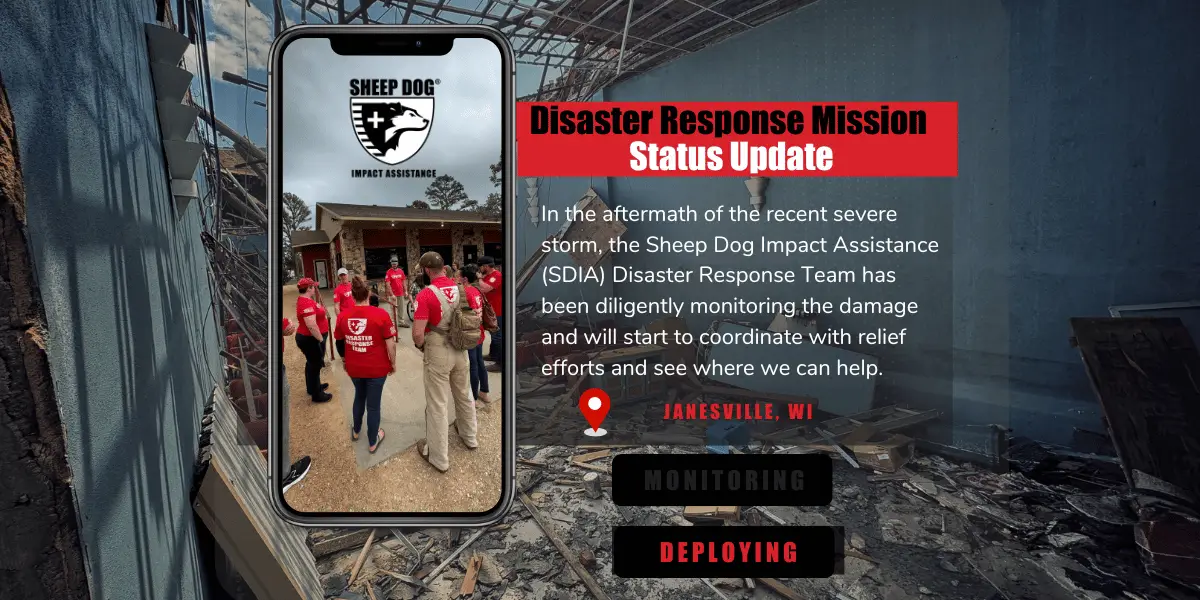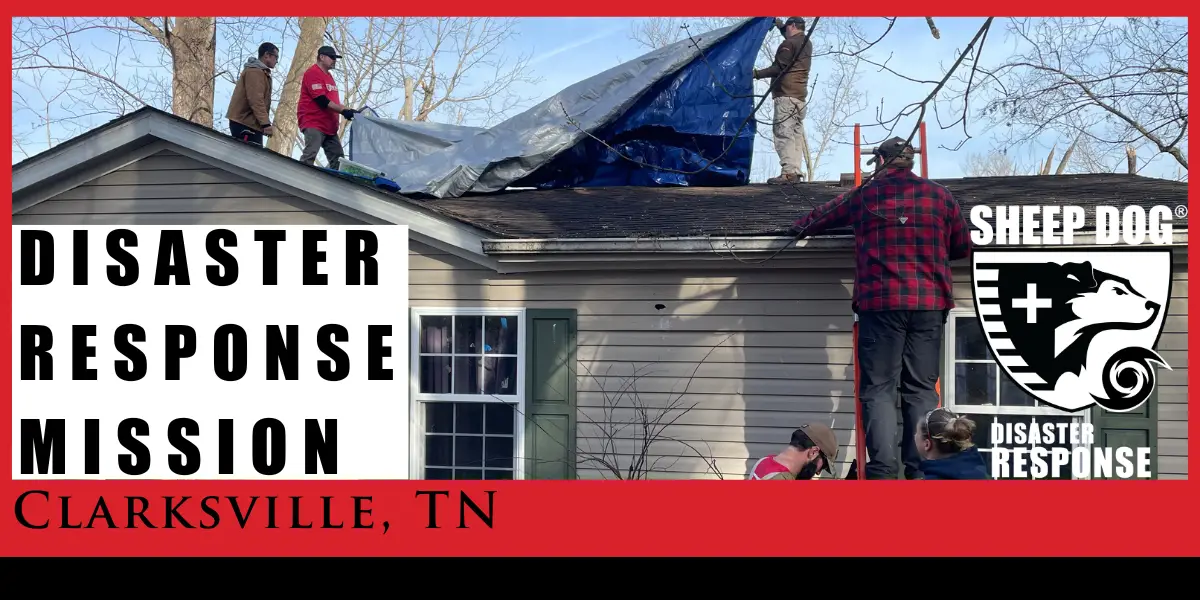NWA DRM- Volunteers Needed!
Join Sheep Dog Impact Assistance (SDIA) as we continue our mission to help those affected by recent tornado damage in Northwest Arkansas. Your support is crucial in rebuilding our community and providing much-needed relief to several of our elderly neighbors.
No experience is necessary to volunteer! We’ll provide all the training and protective equipment you need. Whether you’re a skilled professional or just eager to help, we welcome everyone to make a difference.
Mission Note: We have surveyed several of the properties and have found that we need heavy equipment on several of them and are looking for experienced operators with tractor or skid steer capabilities.
Disaster Response Mission: Janesville, WI 2024
n the wake of the tornadoes that have devastated the community of Janesville, WI, our team has mobilized to assist the community. Our teams will be working together with our local first responders and emergency management personnel to help any way we can.
DISASTER RESPONSE MISSION: NWA STATUS UPDATE
Sheep Dog Impact Assistance is coordinating from the Center for Nonprofits (1200 W. Walnut St., Rogers, AR 72756) parking lot. The back lot where the Sheep Dog vehicles are parked. There will be a daily meet-up and safety brief at 08:30 AM, every day through the weekend. To go out with a team be at the safety briefing.
We will have volunteer t-shirts for you but supplies are limited, if you have previous DRM attire please wear that. Please wear jeans and heavy shoes, bring gloves and if you have any personal safety equipment.
Disaster Response Mission: NWA Status Update
In the aftermath of the recent severe storm, the Sheep Dog Impact Assistance (SDIA) Disaster Response Team has been diligently monitoring the damage and is actively coordinating relief efforts. Northwest Arkansas is our home and this community is very important to us. Our teams will be working together with our local first responders and emergency management personnel to help any way we can.
You must register to assist us on our DRM mission.
Join us in Dallas!
We’re looking for dedicated volunteers to help make this event a success. Whether you can lend a hand for an hour or the entire weekend, your support makes a difference. Let’s bring all of Sheep Dog Nation together to honor the sacrifices of our military, veterans, first responders, and their families. Our goal is to see more than 200 volunteers wearing our t-shirts at this year’s event. Each volunteer will receive a shirt for each day you are at the event. SDIA has limited lodging accommodations available to support volunteers on a first come, first served basis.
Continued Service Opportunities
SDIA’s foundation and ongoing commitment to Continued Service revolve around disaster response, serving as a primary avenue for our Get Off The Couch® programming. These missions, a key component of our volunteerism, empower our Sheep Dogs to consistently contribute to their communities and country in times of need.
Disaster Response Mission
The Sheep Dog Impact Assistance Disaster Response team is on the ground in Clarksville, TN assisting residents in the aftermath of last weekend's tornadoes.
All donations go to help replenish supplies and provide fuel for chainsaws and vehicles as our team remains in Tennessee.
...






